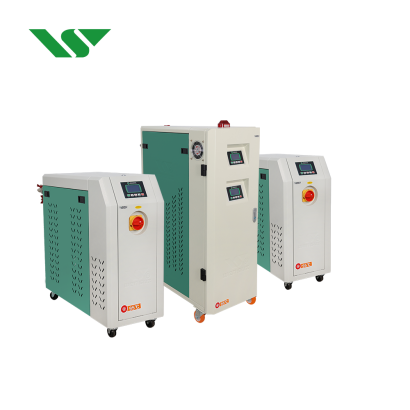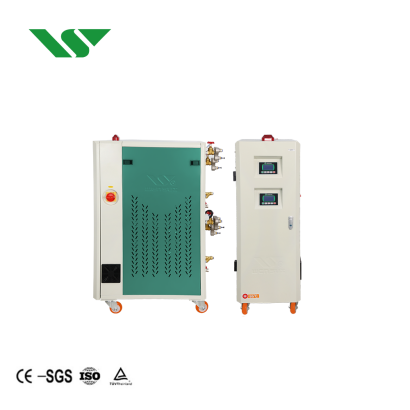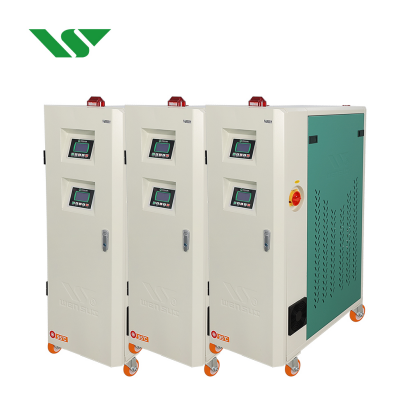Working Principle of a Mold Temperature Controller
2024-11-18 Page view:
In today's manufacturing landscape, precision and efficiency are essential to producing high-quality products. One tool that ensures consistent results in various industries is the mold temperature controller. This device plays a critical role in maintaining stable temperatures for molds and equipment, optimizing production processes and product quality. Let's dive into the core principles, functions, and benefits of mold temperature controllers.

What is a Mold Temperature Controller?
A mold temperature controller is a device designed to regulate the temperature of molds or other equipment during production. By heating or cooling a transfer medium like water or thermal oil, the device ensures that the production environment remains consistent. This precision is particularly vital in industries like plastics, where variations in mold temperature can directly impact product quality and manufacturing efficiency.
Mold temperature controllers typically include:
A control system for temperature management.
Heating and cooling mechanisms.
A circulation pump for transferring the medium.
Sensors for monitoring temperature, pressure, and liquid levels.
Safety systems to protect against overheating or other risks.
How Mold Temperature Controllers Work
The operation of a mold temperature controller involves several steps:
1. Preparation: The system checks the medium levels using sensors to ensure sufficient fluid for operation.
2. Heating or Cooling: The medium is heated or cooled to the desired temperature using a combination of heating elements and a cooling unit.
3. Circulation: A pump circulates the medium through the mold, evenly distributing the temperature.
4. Feedback Control: Sensors relay real-time temperature data to the controller, which adjusts the system as needed using advanced algorithms like PID (Proportional-Integral-Derivative).
This seamless cycle ensures that molds maintain a stable and precise temperature throughout the production process.

Key Benefits of Using Mold Temperature Controllers
Mold temperature controllers offer several advantages, making them indispensable in modern manufacturing:
Improved Product Quality: Consistent temperatures result in uniform products, reducing defects and ensuring customer satisfaction.
Increased Efficiency: By optimizing heating and cooling, the device shortens production cycles, boosting overall output.
Energy Savings: Advanced control algorithms minimize energy consumption, contributing to cost-effective and sustainable operations.
Enhanced Safety: Built-in monitoring systems and safety features protect both the equipment and operators.
Applications Across Industries
Pid temperature controller are versatile devices used in various industries, including:
1. Plastics: Ensuring precise mold temperatures for injection molding, blow molding, and extrusion processes.
2. Automotive: Maintaining stability for the production of high-precision components like dashboards and engine parts.
3. Electronics: Supporting the manufacturing of delicate components that require consistent environmental conditions.
4. Medical Devices: Ensuring compliance with stringent quality standards for medical-grade plastics and instruments.
These applications highlight the adaptability and importance of mold temperature controllers across diverse sectors.

Safety Features of Modern Mold Temperature Controllers
To ensure reliable and safe operation, modern mold temperature controllers come equipped with advanced safety features, such as:
Thermocouple failure alarms to detect sensor issues.
Overheating and overload protection to prevent equipment damage.
Water or medium shortage alerts for continuous operation.
Reverse flow and phase loss safeguards for stable functionality.
These features collectively enhance the reliability of the device, minimizing downtime and production losses.
Conclusion
Mold temperature controllers are essential tools for industries that rely on precise temperature regulation to ensure product quality and operational efficiency. With advanced features and diverse applications, these devices continue to revolutionize manufacturing processes across sectors. Whether you're in plastics, automotive, or medical device production, investing in a reliable mold temperature controller can significantly improve your production outcomes and operational safety.



